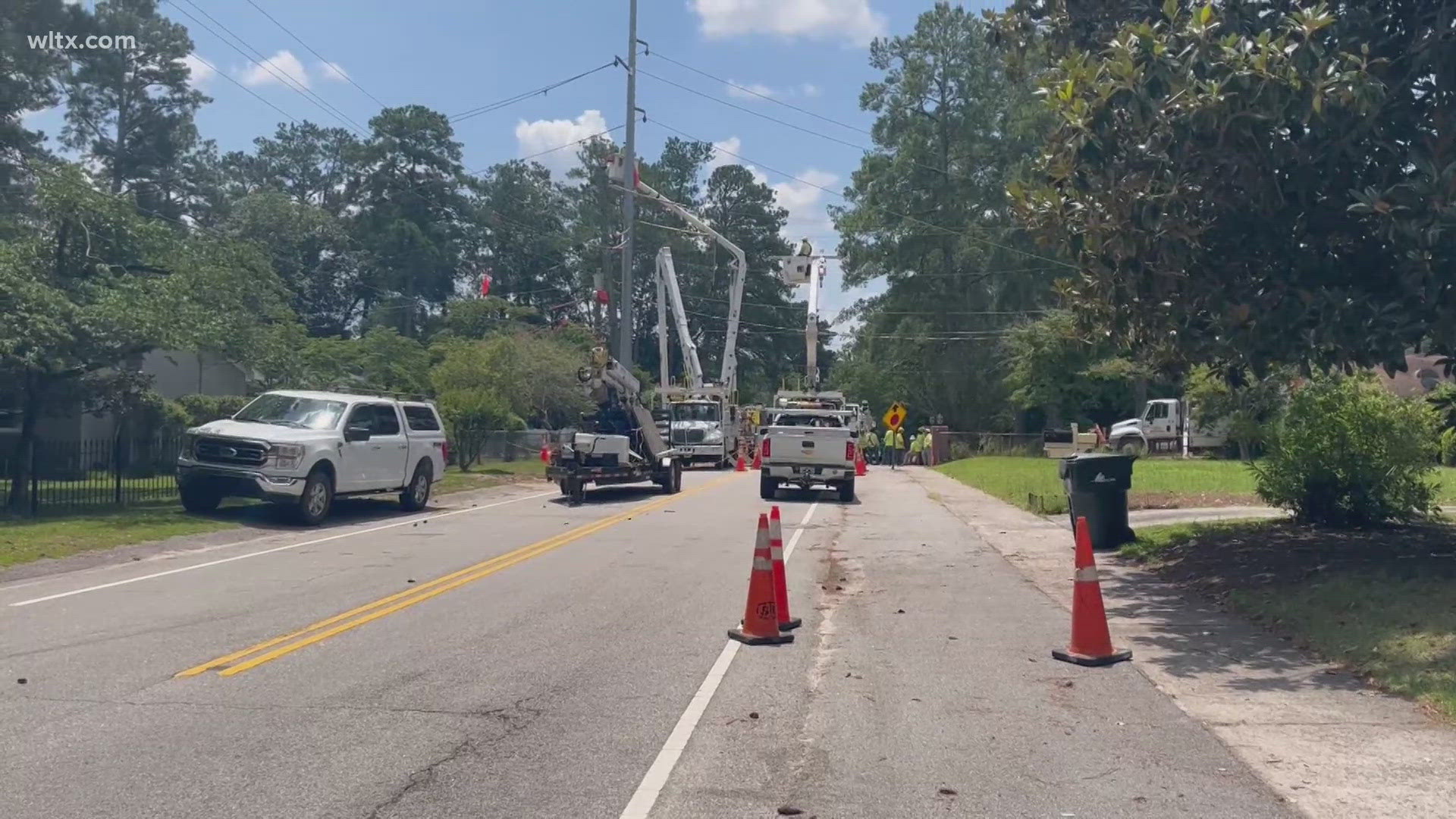
Storms Slam Midlands, Leaving Thousands in the Dark and Searching for Relief
This past Wednesday night, the Midlands were caught in the grip of sudden, powerful summer storms that left thousands of residents without electricity—and many without answers. As the skies turned dark and the winds howled, these pop-up thunderstorms swept through the region with unexpected force, triggering power outages that lingered far into the next day.
It all started quickly. Thunder rumbled across the Midlands, and before many knew what was coming, homes and neighborhoods went dark. Dominion Energy and Mid-Carolina Electric Cooperative reported widespread outages caused largely by lightning strikes. One such strike blew a transformer near Columbia resident Courtney Peacock-Wolfe’s home, leaving her to brave the sticky, humid summer night without power. “As night fell, the heat was just in there, there was no breeze,” she recalled, explaining how she ended up sleeping on her porch just to stay cool.
Also Read:- Topuria Destroys Oliveira at UFC 317 to Claim Lightweight Throne
- Paddy Pimblett Closes In On UFC Gold After Fiery UFC 317 Staredown
Crews scrambled to respond, but even as dawn broke, some areas remained without power. For Courtney, it took more than 24 hours for the issue to be resolved. Dominion Energy confirmed that lightning caused the outage and explained that individual damage locations can complicate and delay restoration efforts. Spokesperson Matt Long advised residents to report outages promptly—and, if necessary, multiple times—to help prioritize service.
In Lexington County, Mid-Carolina Electric Cooperative clocked restoration times around five to six hours for some customers, though others weren’t as lucky. President and CEO Bob Paulling said that every storm forces the company to rethink its approach to resilience. While burying power lines might seem like a permanent fix, Paulling reminded residents that underground systems come with their own set of vulnerabilities and longer repair times—not to mention a high cost that would fall on the customers themselves.
The National Weather Service had issued several thunderstorm watches and warnings across the region, and for good reason. In some areas, wind damage and hail accompanied the lightning, with reports of fallen trees and debris clogging roadways. As the storms moved out, they left behind not only damaged infrastructure but also a reminder of how quickly summer weather in South Carolina can shift from calm to chaotic.
With more storms and heatwaves expected through the season, energy providers are urging people to stay informed and ready. Downloading local weather apps, setting up outage alerts, and knowing where to report issues can make all the difference when the lights go out.
For now, the power is back on in most places. But after a night like Wednesday, the question on many minds isn’t if the next storm will strike—it’s when.
Read More:



0 Comments